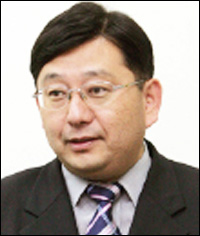Time for Japan to stop distorting truth
On Aug. 24, Japanese Prime Minister Yoshihiko Noda explained to the Japanese National Diet three key points why Dokdo was Japanese territory with the aim of maximizing the impact of Japanese propaganda, but instead, it exposed the limits of the logic within it.
The first reason that Noda provided for the nation’s claim over Dokdo was that Japan established its ownership in the mid 17th century.
This assertion is based on the fact that fishermen of Tottori-han (present day Tottori Prefecture) visited Ulleung Island and Dokdo regularly for 73 years, from 1620 to 1693.
The Samurai-led Edo Shogunate, however, asked the governor of Tottori-han, who frequented Ulleung and Dokdo, in January 1696 if there was any island related to Tottori-han except Ulleung Island.
It reveals that the Edo Shogunate was not even aware of Dokdo’s existence. The governor was quoted as saying that “there is Songdo (then the Japanese name of Dokdo), which is not our territory.”
This meant that Dokdo did not belong to Japan.
Official Japanese documents published in 1870 and 1877 based on a thorough review of late 17th century records also concluded that Ulleung Island and Dokdo were part of Korea.
The second, according to the Prime Minister, was that Dokdo was officially consolidated into Oki Islands, Shimane Prefecture in 1905. Dokdo at that time was said by Japan to be terra nullius (land belonging to no one), and was incorporated within the prefecture based upon occupation.
Here, Japan disregarded the aforementioned official documents from 1870 and 1877. The then Ministry of Domestic Affairs opposed the incorporation saying that the country did not need to alert the world powers that Japan could swallow the entire Korean Empire by taking up the rocky outcrops.
It is noteworthy that the incorporation was pursued secretly. Japan, having silenced all the superpowers, was able to force at will the Eulsa Treaty upon Korea in November 1905, depriving Korea of all its diplomatic rights.
After concluding the treaty, public servants of Shimane Prefecture visited Mayor Shim Heung-taek of Ulleung County and informed him of Japan’s newly established sovereignty over Dokdo as there was no need then for Japan to hide what it had done about the islets.
Governor Shim reported this to the Korean government, which ordered the governor to pay attention to Japan’s future actions, making it clear that the islets were part of Korea.
Documents show that Korea practically ruled Dokdo before 1905. For example, the two countries signed a Fisheries Agreement between Joseon and Japan in 1889 and agreed to impose taxes on ships from both countries for fishing in the coastal waters of the other.
In accordance with the agreement, the Japanese Consulate in Busan paid tax to the Joseon government after collecting taxes from Japanese ships which went fishing near Ulleung Island.
Japanese fishermen brought abalone from Dokdo to Ulleung Island and exported them to Japan. The governor of Ulleung Island levied taxes on the exports, demonstrating strong evidence that Ulleung Island and Dokdo were under Korea’s jurisdiction in the late 19th century since imposing tax is one of a nation’s sovereign powers.
Noda puts forth third reason for Japan’s sovereignty of Dokdo as the refusal by the U.S. Department of State of Korea’s request to include Dokdo when the San Francisco Peace Treaty was being drafted in July 1951.
Korea, nevertheless, has illegally occupied Dokdo up to now by declaring the (Syngman) Rhee Line (or Peace Line), he added. This occurred in January 1952 when the South Korean government under President Rhee Syngman established a territorial boundary line that extended into the East Sea and encompassed Dokdo.
This remark should not be overlooked because it is the essence of Japan’s theory of unlawful occupation of Dokdo by Korea.
We can find Japan distorted facts here, too. The country exaggerated the sole view of the United States as if all the Allied Forces had reached an agreement.
Many countries among the Allied Forces maintained that the islets belonged to Korea, and the sole view of the United States does not constitute a conclusion of the treaty.
The first plan of the Allied Forces on Dokdo appeared in SCAPIN 677 issued by the General Headquarters of Supreme Commander for Allied Powers in 1946, which stated that Dokdo was under Korea’s jurisdiction.
No country demanded that Korea depart from Dokdo because the East Sea islets were Japanese territory when Korea announced a Declaration of Sovereignty over Neighboring Seas and claimed them as its territory.
This was because the Allied Powers had no choice but to admit that Dokdo has been ruled by Korea since 1948, and they tacitly agreed on Korea’s move on Dokdo even three months before the peace treaty took effect.
As Japan’s claim of sovereignty over Dokdo is wrong and the islets are not a disputed area, Korea has no basis to assent to Japan’s referral of the issue to the International Court of Justice.
Yuji Hosaka is professor and the head of the Dokdo research center at Sejong University in Seoul. <The Korea Times/Yuji Hosaka>


























































